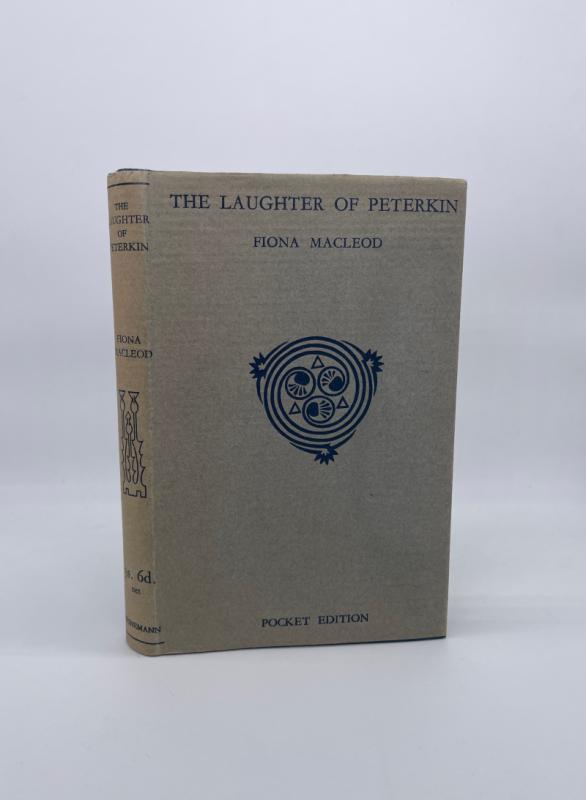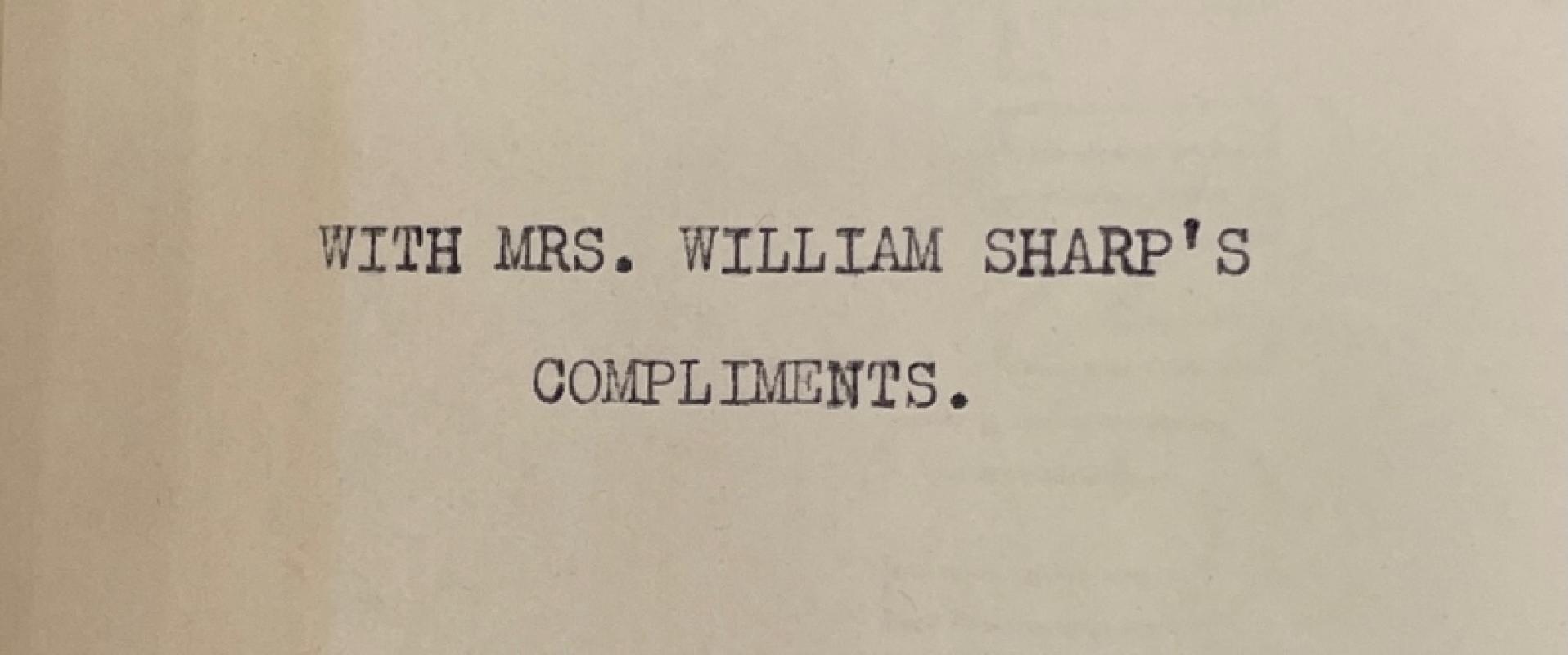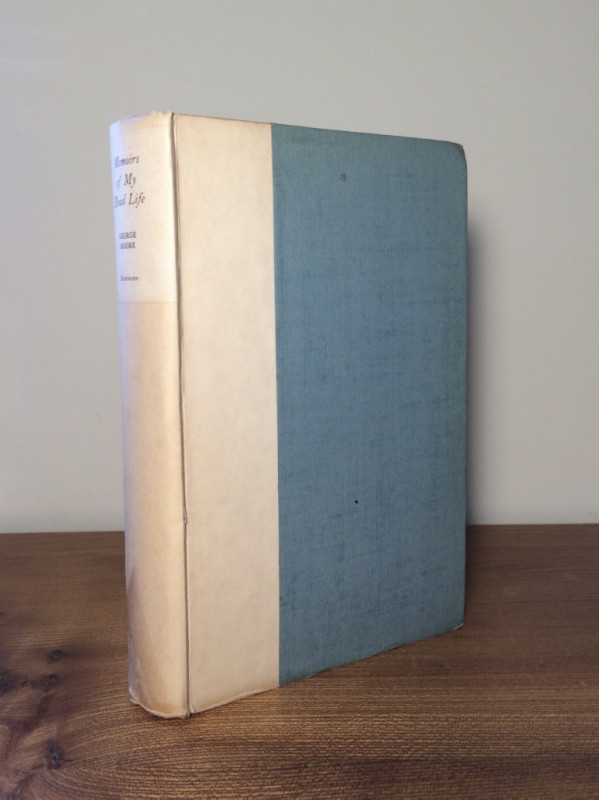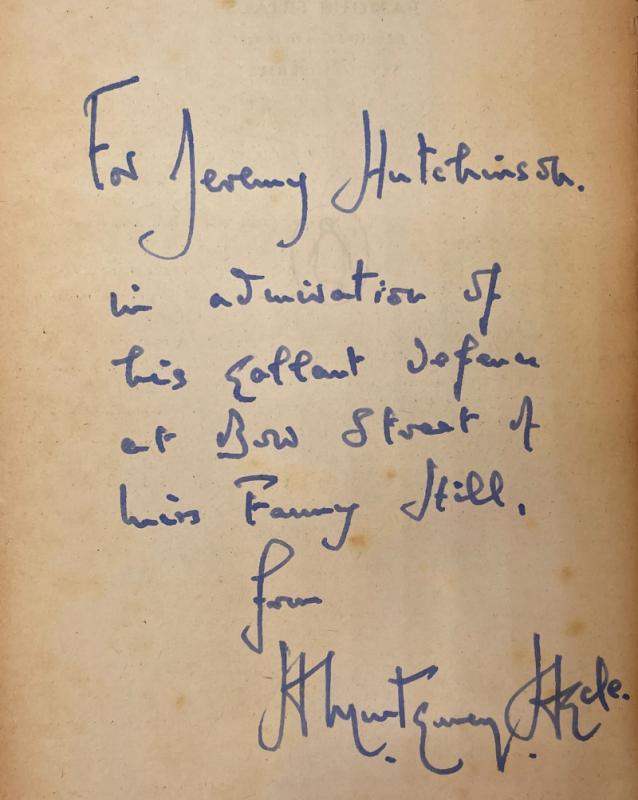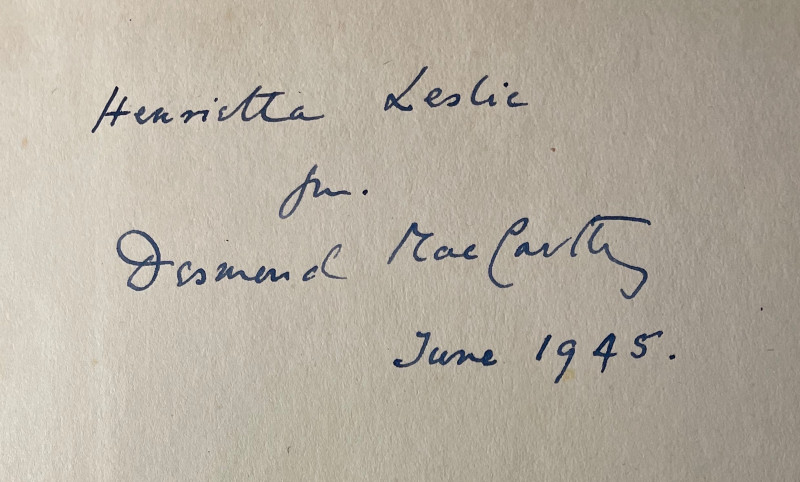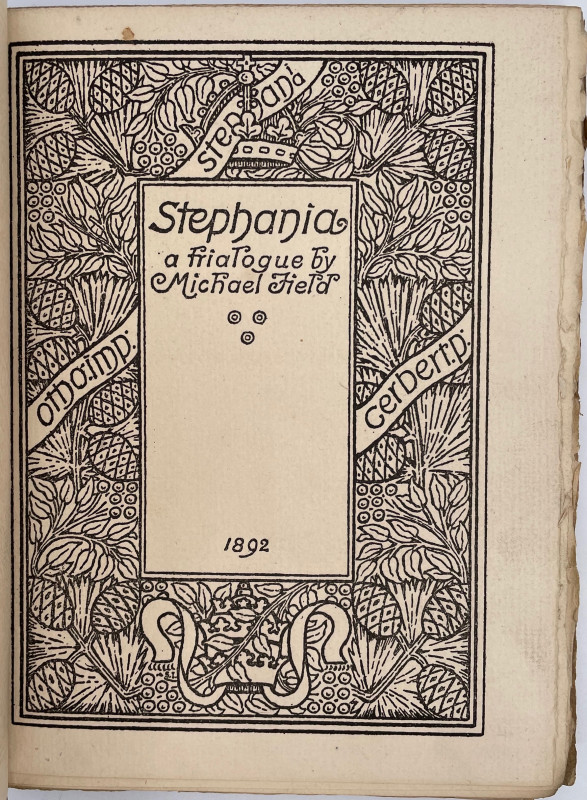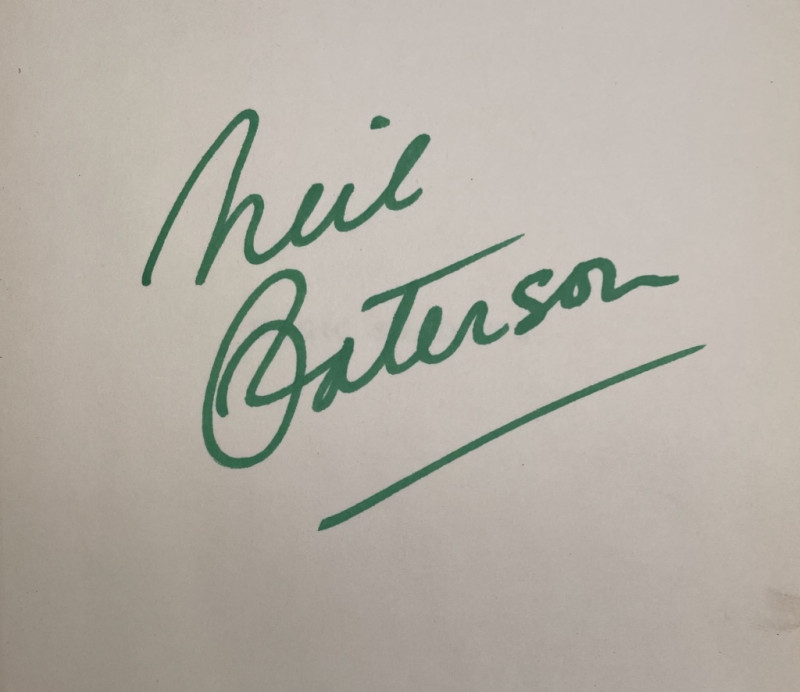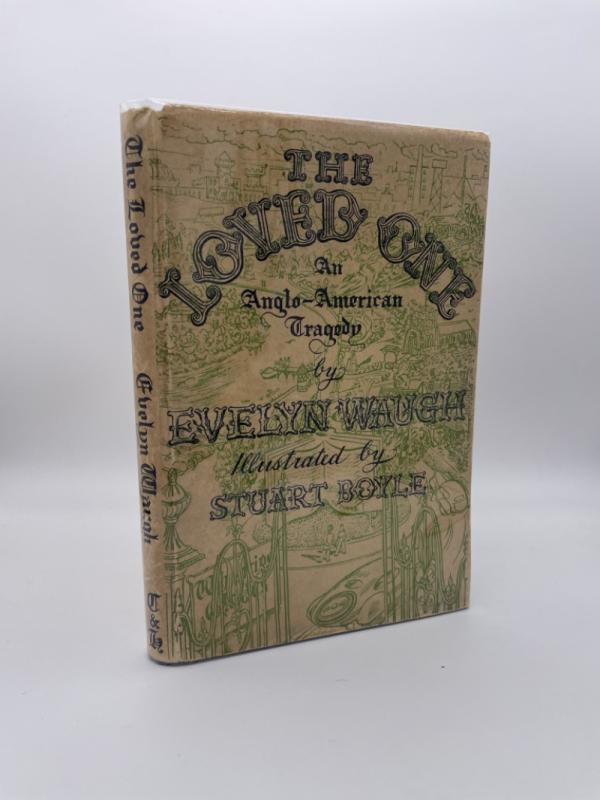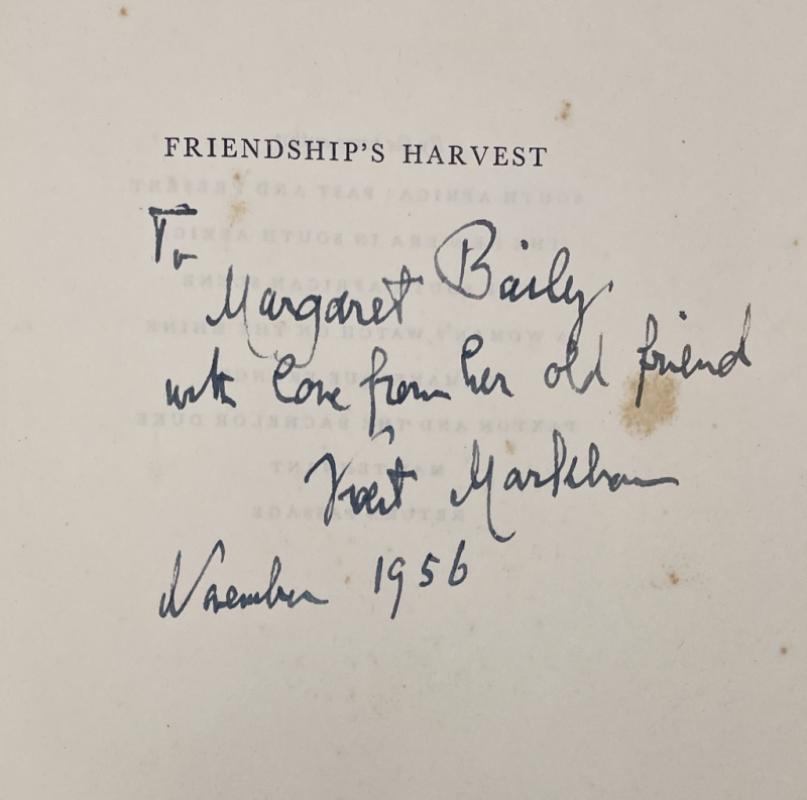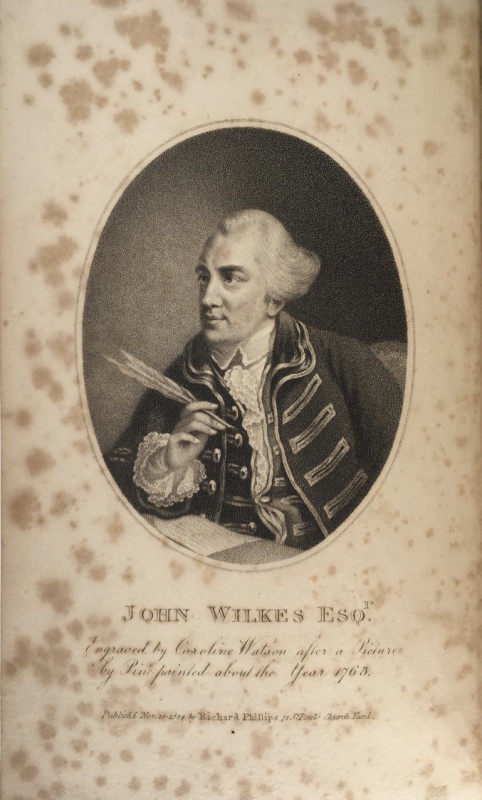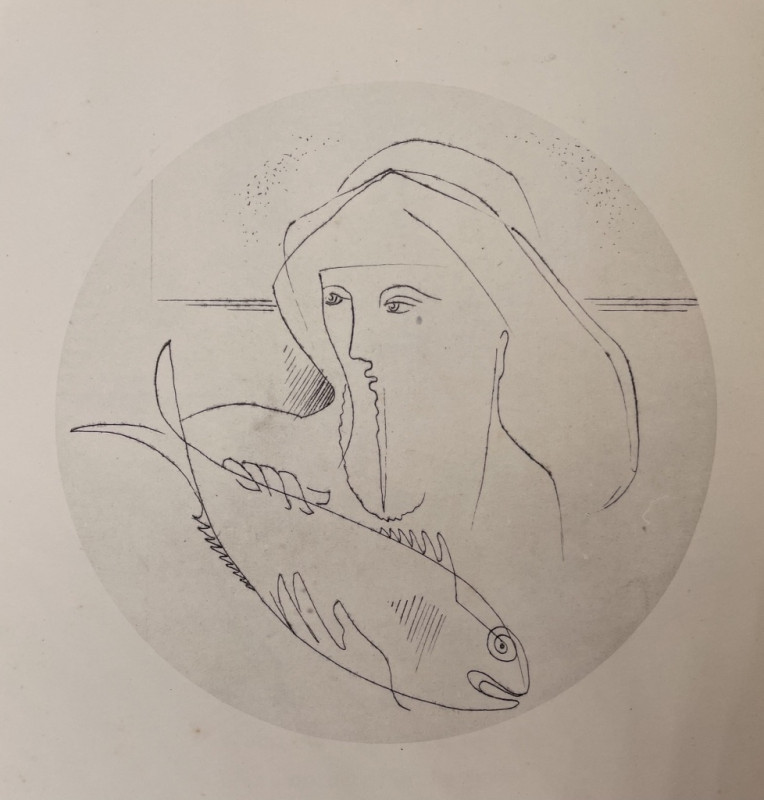The Laughter of Peterkin: A retelling of old tales of the Celtic underworld (Vol. VIII of The Works of “Fiona Macleod”).
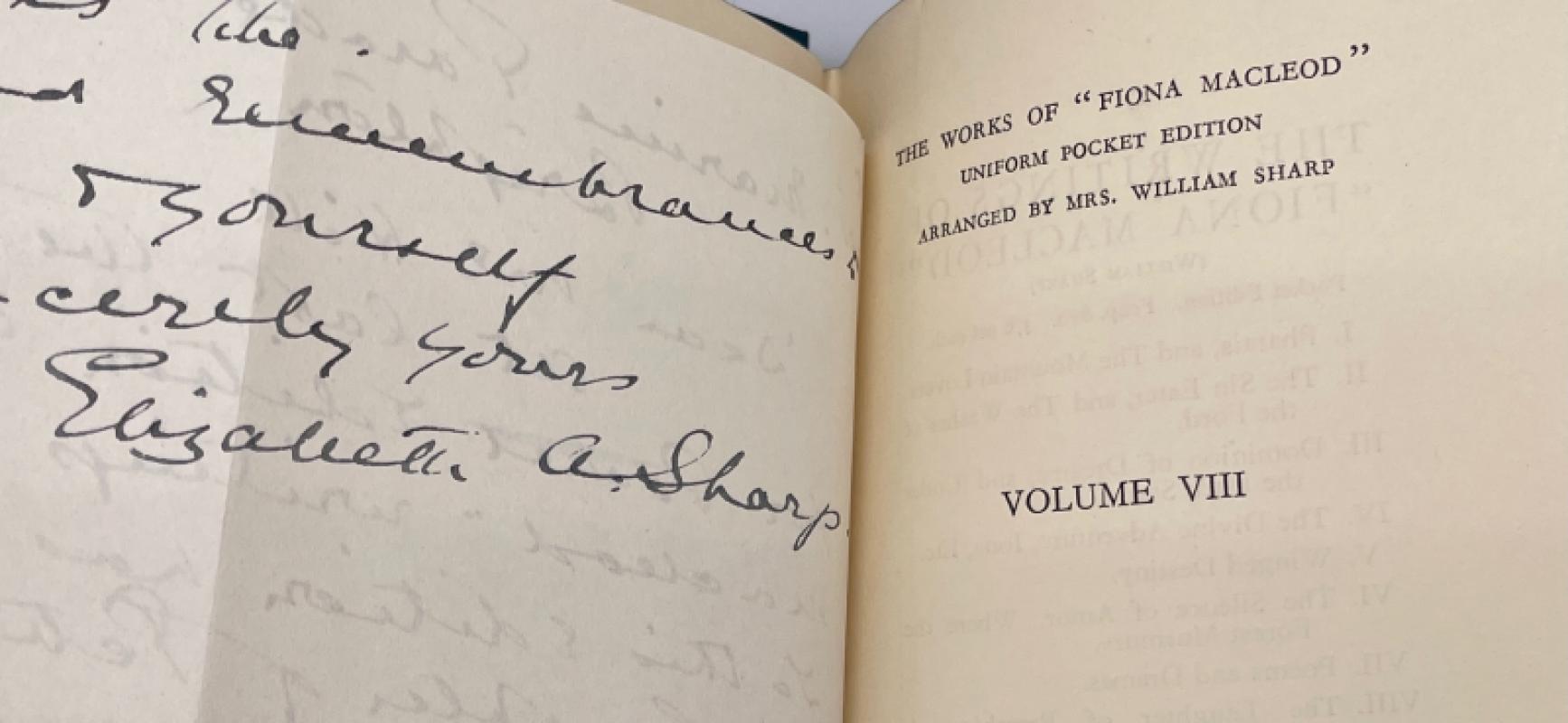
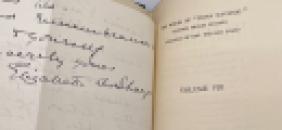

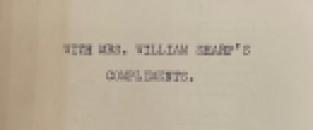
Book Description
FIRST POCKET EDITION, with ALS from ELIZABETH A. SHARP. 8vo. Original blue cloth, lettered and decorated in gilt and blind. Top edge blue, bottom untrimmed. Pushing to head of spine. Ernest Hill’s dated (24 Nov. 1927) name and Selly Oak address inscribed in blue-black ink to ffep, Mrs William Sharp’s typed compliments slip on cream paper pasted to ffep (band of offsetting), friendly 1.5 page ALS to “Mr Hill” taped to series title page: folded, offsetting to endpapers and blanks, else, clean, bright and tight. In the original grey dust jacket, lettered and illustrated in blue: gently toned, spine darkened, gentle edgewear. Unusual.
Dealer Notes
A near immaculate association copy of the first pocket edition of Fiona Macleod’s collection of Celtic tales, “With Mrs William Sharp’s compliments” slip and her friendly ALS, discussing the new edition, pasted in; from the library of British artists Ernest and Catherine Hill.
Writing as Fiona Macleod, William Sharp’s Celtic romances had snagged the attention of late Victorian readers, becoming central to the Celtic revival and proved his most successful literary outputs. He went to great lengths to keep his pseudonym intact, even embroiling his sister, Mary Beatrice Sharp, in his cross-sex/ gender masquerade by persuading her to pen letters as Macleod. Evidently, by 1927, his mask had slipped. Sharp had died in 1905, with Elizabeth (1856–1932), his wife, becoming his literary executor. A critic and translator of Heine, she edited the posthumously published Uniform Edition of The Works of “Fiona Macleod”. In her affable note, Elizabeth Sharp writes Ernest Hill to announce the arrival of “the long wished for Pocket Edition of the Fiona Macleod writings” and inform him that she has directed the publishers to “send you a copy of it in its new dress” (i.e. this book).
Sharp’s correspondent was Ernest F. Hill, RBSA (1873-1960), a British artist, arts educator and Vice President of the Royal Birmingham Society of Artists (RSBA). An early Newlyn group member, he worked primarily in watercolour, favouring British landscape and coastal scenes; he exhibited at the Royal Academy until 1946, the Royal Institute of Oil Painters, but most often in Birmingham (CAI, 2021). Hill was Headmaster of the prestigious Bournville School of Art and Crafts, and was well-connected in regional art networks, as well as with the Cadbury family. Catherine Hill was a watercolour artist, print maker and book binder. Their library reflects these interests, featuring numerous arts and crafts, typographical and fine press books, often in excellent condition, thanks to the addition of hand-marbled wrappers.
It’s not clear how Sharp and Hill knew each other, but the Birmingham School of Printing, to which Hill was connected, would go on to publish a handsome illustrated edition of Fiona Macleod’s The Immortal Hour in 1937.
Writing as Fiona Macleod, William Sharp’s Celtic romances had snagged the attention of late Victorian readers, becoming central to the Celtic revival and proved his most successful literary outputs. He went to great lengths to keep his pseudonym intact, even embroiling his sister, Mary Beatrice Sharp, in his cross-sex/ gender masquerade by persuading her to pen letters as Macleod. Evidently, by 1927, his mask had slipped. Sharp had died in 1905, with Elizabeth (1856–1932), his wife, becoming his literary executor. A critic and translator of Heine, she edited the posthumously published Uniform Edition of The Works of “Fiona Macleod”. In her affable note, Elizabeth Sharp writes Ernest Hill to announce the arrival of “the long wished for Pocket Edition of the Fiona Macleod writings” and inform him that she has directed the publishers to “send you a copy of it in its new dress” (i.e. this book).
Sharp’s correspondent was Ernest F. Hill, RBSA (1873-1960), a British artist, arts educator and Vice President of the Royal Birmingham Society of Artists (RSBA). An early Newlyn group member, he worked primarily in watercolour, favouring British landscape and coastal scenes; he exhibited at the Royal Academy until 1946, the Royal Institute of Oil Painters, but most often in Birmingham (CAI, 2021). Hill was Headmaster of the prestigious Bournville School of Art and Crafts, and was well-connected in regional art networks, as well as with the Cadbury family. Catherine Hill was a watercolour artist, print maker and book binder. Their library reflects these interests, featuring numerous arts and crafts, typographical and fine press books, often in excellent condition, thanks to the addition of hand-marbled wrappers.
It’s not clear how Sharp and Hill knew each other, but the Birmingham School of Printing, to which Hill was connected, would go on to publish a handsome illustrated edition of Fiona Macleod’s The Immortal Hour in 1937.
Author
“MACLEOD, Fiona” (William SHARP); SHARP, Mrs William (Elizabeth A. Sharp); [HILL, Ernest F.]
Date
1927
Binding
Cloth
Publisher
London: William Heinemann Ltd
Condition
Near fine/ very good.
Friends of the PBFA
For £10 get free entry to our fairs, updates from the PBFA and more.
Please email info@pbfa.org for more information
